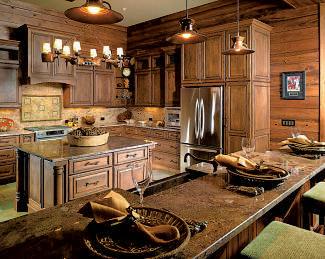Signs a roof must be repaired or replaced
The exterior components of a home, such as the siding and the roof, help to protect its occupants from the elements. While many roofing materials can last for decades, at some point in time homeowners will likely have to repair or replace the roof on their home.
Roof wear and tear may not always be so evident, particularly because most homeowners do not make it a point to get on their roofs very often. The first sign of roof damage typically is a leak that is noticeable from the indoors. It may include a browned spot on the ceiling or even pooling water in the attic. Leak from storm damage or something minor like a water intrusion through a nail hole or from a lost shingle typically can be repaired easily enough. However, additional indicators may necessitate a complete roof overhaul. Here are some signs a roof is in need of repairs or replacement.
• Sagging roof: If the roof is sagging, it could be due to excess loads, such as water-damaged shingles or even weakened roof structure. A professional will need to restore the integrity of the roof.
• Cracking and buckling: It is likely that shingles will have to be replaced if there is cracking or if shingles are buckling and warping.
• Exposed nails: Exposed nails may rust and contribute to a leaky roof, says Family Handyman. How long the nails were exposed could indicate if the roof can be repaired or if everything should be redone.
• Lost granules: Asphalt roofing shingles have small granules on the surface. Over time these granules will slowly degrade and fall off. If there are many granules in gutters or if one can see that portions of the shingles are bare, it is likely time for a new roof.
• Visible light: Homeowners who can see light streams coming into the home need roof repair. This is indicative of holes, cracks or spaces in the roof.
• Growth on the roof: Mold and mildew on the roof is a sign that the roof needs to be repaired or replaced. Such growths contribute to rot that jeopardizes the integrity of the roof. A durable roof protects a home from the elements. Various symptoms signal that it is time to repair or replace a roof. FH238155









FALL HOME IMPROVEMENT
Update your window coverings to increase your safety, style and savings
(BPT) - It’s time to welcome the freshness of the warmer months into our homes and embrace the new season. For many of us, this time of year is a chance to renew and re-organize. Spring and summer cleaning isn’t just about dusting and decluttering; it’s also an opportunity to modernize and improve your living spaces.
This includes updating your window coverings, especially if you have infants or young children. Let’s explore the reasons why switching to cordless window coverings can enhance both the aesthetics and safety of your home.
HAZARDS OF CORDED WINDOW COVERINGS
Traditional corded window coverings may seem harmless, but they pose significant risks, especially in homes with young children. The dangling cords can become entangled, leading to accidents such as strangulation. Ac-
cording to the U.S. Consumer Product Safety Commission (CPSC), corded window coverings are one of the top hidden hazards in the home. Find out more from the Window Covering Safety Council.
STYLE BENEFITS
Cordless options not only eliminate the risk of entanglement but also offer a sleek, modern aesthetic. Opt for durable materials that can withstand daily wear and tear and choose colors and patterns that complement your existing decor. With cordless window coverings, you can achieve a clean and clutter-free look while ensuring the safety of your loved ones.
SAVE MONEY WITH CORDLESS WINDOW COVERINGS
Did you know using the right window coverings can help you SAVE money? When selecting cordless window coverings for your home,

consider energy-efficient window coverings, which can help you save on energy bills as window attachments help regulate the amount of sunlight and heat that enters and exits a home.
With today’s high inflation costs, this is a no-brainer. Find out how you can increase your energy savings and comfort with AERC certified products.









FALL HOME IMPROVEMENT
Tips to make a home less vulnerable to criminals
Property crimes are perhaps more common than people may realize. Data from the Council on Criminal Justice indicates residential burglaries declined by 26 percent in 2023 compared to 2019. However, the Federal Bureau of Investigation indicates there were nearly seven million property-related crimes committed in 2019, which means there were still more than five million such crimes committed in 2023.
Homeowners recognize the importance of protecting themselves, their loved ones and their valuables. Locking doors at night is one measure of protection anyone can employ, but there’s a host of additional steps individuals can take to make their homes less vulnerable to criminals.
• Periodically assess existing security devices. Locks, security cameras and additional devices are effective deterrents, but only if they’re working properly. It’s easy to overlook security devices, but routine inspections can ensure they continue to serve as a security blanket between residents and criminals.
• Embrace some simple solutions. The Insurance Information Institute recommends utilizing simple security devices such as padlocks, door and window locks, grates, bars, and bolts. These devices may not prevent burglars from entering a home, but they can increase the amount of time it takes criminals to gain access. That can be enough to discourage criminals and also provide extra time for homeowners and neighbors to see and report suspicious individuals lurking around homes.
• Install a burglar alarm. Burglar alarms can be effective deterrents and even help homeowners save money on their insurance policies. The Electronic Security Association estimates that home alarm systems can save homeowners as much as 20 percent on their insurance policies. Such savings can offset the cost to purchase and install burglar alarms. Homeowners who doubt the efficacy of burglar alarms as a crime deterrent should know that a study from researchers at the University of North Carolina, Charlotte examining the habits of burglars found that 60 percent decided against burglarizing properties they learned had burglar alarms.
• Trim privacy trees and shrubs around the perimeter of your home. Privacy trees and shrubs can make it harder for passersby to see into a home from a nearby street or sidewalk. However, such features also can provide hiding space for criminals looking to gain access to a property. Routinely trim trees and shrubs near doors and windows so they are not inadvertently providing cover for criminals.
• Light up the outside. Exterior lighting is wildly popular among homeowners for its aesthetic appeal. But lights around walkways and throughout a landscape also illuminate the exterior of a home, making it harder for criminals to get around without being seen. Spotlights and motion-detection lights can alert homeowners if someone is outside, and such lighting also can make it easier to spot criminals on exterior cameras, which can deter burglars.
There’s no shortage of ways for homeowners to make their properties less vulnerable to criminals.
TF24A349
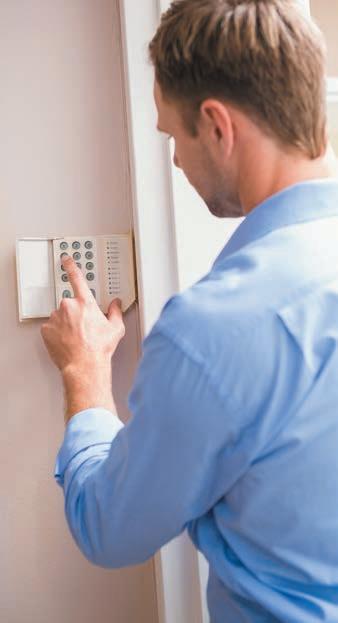










FALL HOME IMPROVEMENT
How to make a home more cozy
The meaning of the term “cozy” varies as it pertains to home decor. For some, cozy may mean intimate spaces with lots of quilts and throws. For others, cozy could indicate bright and airy spaces enhanced by plenty of fresh foliage.
Regardless of how they define cozy, homeowners typically want their homes to be inviting and comfortable. With that in mind, the following are some ways to impart a cozy vibe to any living space.
• Make use of a replace. Flames lapping wood (or faux wood in the event of gas-powered fireplaces) can put anyone in a tranquil state of mind. Fireplaces add instant ambiance and make great places for people to congregate and engage in conversation. During warmer months when the fire isn’t blazing, decorative candles can be lit to mimic the same feel.
• Add texture in the design. Texture can be anything from a raised pattern on wallpaper to a knotty area rug to a mosaic piece of artwork. A home with texture tends to create cozier impressions than one with all sleek and smooth surfaces.
• Enjoy a soft rug. Although many design experts say hardwood floors or laminate options are easier for allergies and keeping a home clean, a soft rug underfoot can be welcoming. Rather than wall-to-wall carpeting, place area rugs in spots that can use some cozying up, such as beneath beds and even under the dining table.
• Light candles. The warm, flickering light of candles adds cozy vibes in spades. According to The Spruce and Paula Boston, a visual merchandiser for Festive Lights, candles can be used throughout a home to create instant atmosphere. Exercise caution with candles and fully extinguish them before retiring for the evening.
• Update bedding for the season. Crisp and light cotton and linen are cozy materials when the weather is warm. But when the temperature starts to dip, flannel or jersey bedding makes a bed that much more inviting, says Real Simple.
• Invest in lots of pillows. Pillows can instantly make a spot more cozy, whether it’s the living room sofa or an outdoor lounging nook. Look for materials that are durable for the space




in which they’re being used.
• Think about warm lighting. The transition from incandescent light bulbs to halogen and LED is beneficial from an environmental standpoint. However, LEDs illuminate with a more stark, blue light that can seem clinical in home spaces. Look for bulbs where the “temperature” can be customized. The more the color spectrum leans toward warm light, the more cozy a space will feel. This can be enhanced by putting some lights on dimmer switches, and
toning down the brightness as needed.
• Install a bookshelf. Even for those who are strict devotees of e-readers, a shelf full of actual books interspersed with some well-placed knickknacks can make a room feel more cozy. Books add texture, the feel of hallowed halls and libraries, and visual appeal.
Making a home more cozy doesn’t have to be complicated. A few easy modifications can improve interior spaces. HI248160


FALL HOME IMPROVEMENT
Projected timelines for popular renovation projects
Renovations help homeowners customize their homes to align with their needs and wants. Remodeling may be necessary to replace outdated fixtures and features, address mistakes previous homeowners may have made, or to make a home more functional.
Homeowners often find it beneficial to hire professional contractors when they have work to be done around the house to ensure the job gets done to code and to their satisfaction. Timelines for home remodeling projects vary depending on a number of variables, including the size of a crew as well as the scope of the project.
Once a project commences, the timeline can feel endless. The following are estimates of timelines for top remodeling projects to give homeowners an idea of how long their renovation projects may last, courtesy of Renofi, a company that provides a lending platform leveraged by credit unions nationwide to offer loans to consumers.
• Kitchen: There are a lot of moving parts to a kitchen renovation, involving the services of electricians, plumbers, structural experts, and even interior design professionals. Not to mention the needs of craftspeople who
can make custom cabinetry and countertops. Kitchen remodels can take anywhere from six to 12 weeks.
• Bathroom: The process of a bathroom renovation typically involves demolishing the old bathroom, removing old fixtures and starting from the ground up. As with a kitchen remodel, bathroom jobs require the services of different professionals. That is why homeowners can expect three to 10 weeks for a bathroom, depending on the scope of the project.
• Finishing a basement: Finishing a basement can add valuable living space to a home. Establishing a home theater space or man cave may require installing framing, insulation, utilities, drywall, flooring, and any additional needs if the finished basement will have a bathroom or necessitate additional plumbing. A finished basement project can last one to two months. But the good news is that typically the rest of the house is livable while the work is being done, so residents will not be disrupted.
• Whole home remodel: Hogan Design & Construction says that a whole house remodeling project can take anywhere from 16 weeks to 24 weeks. More in-
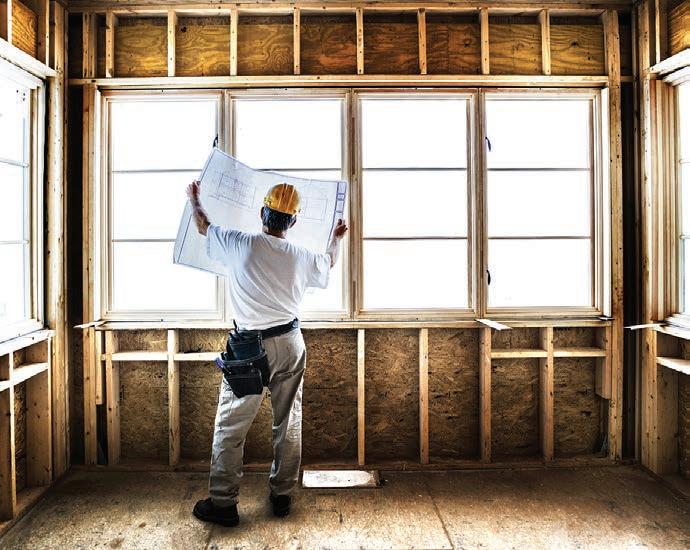
volved projects can take longer. Remodeling a home often involves a considerable investment of time and money. Knowing how long a
homeowner will be inconvenienced by the work can help the household plan accordingly. HI248161







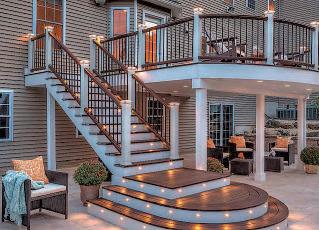
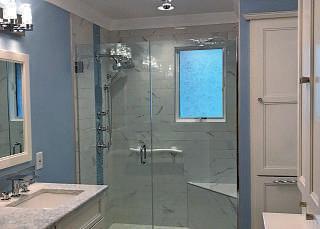


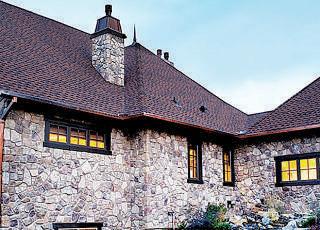
Illinois’ longest operating lumberyard continues to thrive along Peru’s historic riverfront. Maze Lumber has been providing top quality building materials to Illinois Valley contractors and homeowners for over 176 years, still owned by the founding fathers (Maze).
Located in a 15,000-square foot showroom and o ce, we o er building materials for the modern home as well as a full line of the traditional lumber items used in home building, commercial construction, and industrial applications. Our experienced sales sta takes pride in their
along


